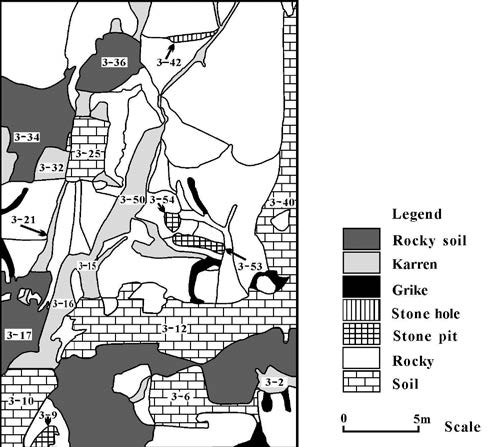Forest Soil Heterogeneity and Soil Sampling Protocols on Limestone Outctops: Example from SW China
DOI:
https://doi.org/10.3986/ac.v39i1.117Abstract
Forest soil heterogeneity of outcrop karst was studied by testing soil organic carbon at a selected 20 m × 30 m plot set up in Maolan primitive karst forest area, southern Guizhou Province, China. 90 microhabitats in the plot are roughly classified into 7 distinct microhabitat There was great heterogeneity in the plot not only for soil distribution but for great difference of soil organic carbon content. Soil organic carbon (SOC) contents were much higher, ranging from 40.1 g/kg to 203.5 g/kg. The CV (coefficient of variation) value of SOC from 38 soil sampling points, 22 sampling microhabitats, each microhabitat type, and individual microhabitat was 43%, 41%, 2.2% to 42%, 14% to 57.3% respectively. This showed high soil heterogeneity in terms of soil distributing pattern, size and soil organic carbon SOC content in outcropped karst. Different methods were applied to calculate SOC content in the plot. Small discrepancies suggested that the mixed soil samples collected from the major microhabitat types covering 95% soil distributing area were capable of representing soil nutrient status of the whole plot.
Downloads

Downloads
Published
How to Cite
Issue
Section
License
Authors guarantee that the work is their own original creation and does not infringe any statutory or common-law copyright or any proprietary right of any third party. In case of claims by third parties, authors commit their self to defend the interests of the publisher, and shall cover any potential costs.
More in: Submission chapter




